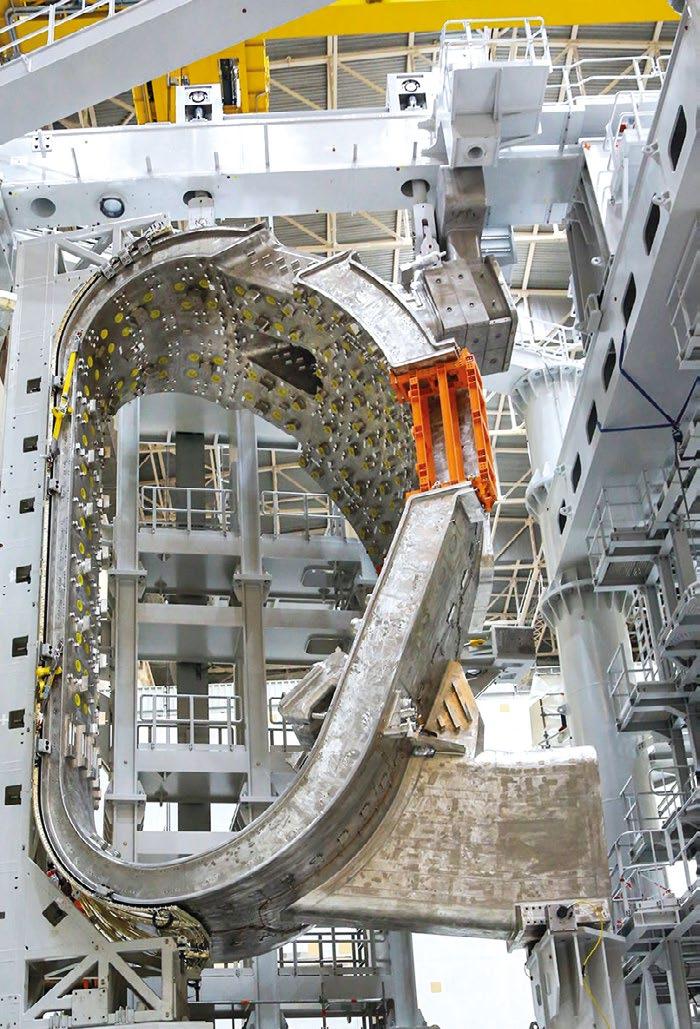ANNUAL REPORT




A star will soon be born, a star fashioned by human hands. From a scientific and technological point of view it will be one of humankind’s historic achievements. The creation of an artificial star and the tapping of the tremendous amounts of energy produced could forever alter the course of civilization.
Deep in the heart of the Tokamak Building, the pieces of the ITER Tokamak—the machine designed to “light” the star— are coming together one by one.
COMPONENTS AS TALL AS BUILDINGS AND WEIGHING HUNDREDS OF TONNES, BROUGHT TOGETHER WITH THE ARTISTRY AND PRECISION OF WATCHMAKING.
A machine conceived at the very frontier of what is possible to design, manufacture, and assemble—the world’s largest magnetic confinement fusion device.
What had been the aspiration of three generations of physicists is now the daily reality of thousands of scientists, engineers, technicians and labourers at ITER in France and throughout the world.
An unprecedented global collaboration is behind the realization of ITER, bringing together exceptional minds from China, the European Union, India, Japan, Korea, Russia and the United States in pursuit of the same goal: proving to the world that a new way of producing baseload energy is possible … a cleaner and more sustainable way.

An “international project that aims to demonstrate the scientific and technological feasibility of fusion energy for peaceful purposes, an essential feature of which would be achieving sustained fusion power generation.” (From Article 2 of the ITER Agreement)
The People’s Republic of China, the European Atomic Energy Community (Euratom), the Republic of India, Japan, the Republic of Korea, the Russian Federation, and the United States of America are the seven signatories to the ITER Agreement.
Signed by all Members in November 2006, the ITER Agreement establishes the ITER Organization and defines the joint implementation of the ITER Project.
Established to construct, operate, exploit, and de-activate the ITER facilities in accordance with project objectives; encourage the exploitation of the ITER facilities by the laboratories, other institutions and personnel participating in fusion energy research and development programs of the Members; and promote public understanding and acceptance of fusion energy. (Article 3)
The governing body of the ITER Organization. The Council is responsible for the promotion and overall direction of the ITER Organization and has the authority to appoint the Director-General, to approve the Overall Project Cost (OPC) and Overall Project Schedule (OPS), to approve the annual budget, and to decide on the participation of additional states or organizations in the project. (Article 6)
Each Member has created a Domestic Agency to fulfil its procurement responsibilities to ITER. These agencies employ their own staff, have their own budget, and contract directly with industry.
The Science and Technology Advisory Committee (STAC) advises the ITER Council on science and technology issues that arise during the course of ITER construction and operation.

The Management Advisory Committee (MAC) advises the ITER Council on management and administrative issues arising during the implementation of the ITER Project.
The Financial Audit Board (FAB) undertakes the audit of the annual accounts of the ITER Organization. (Article 17)
A Management Assessor is appointed every two years by the ITER Council to assess the management of the ITER Organization activities. (Article 18)
In September, poloidal field coil #5 (PF5) becomes the second ITER magnet to be lowered into the machine assembly pit.
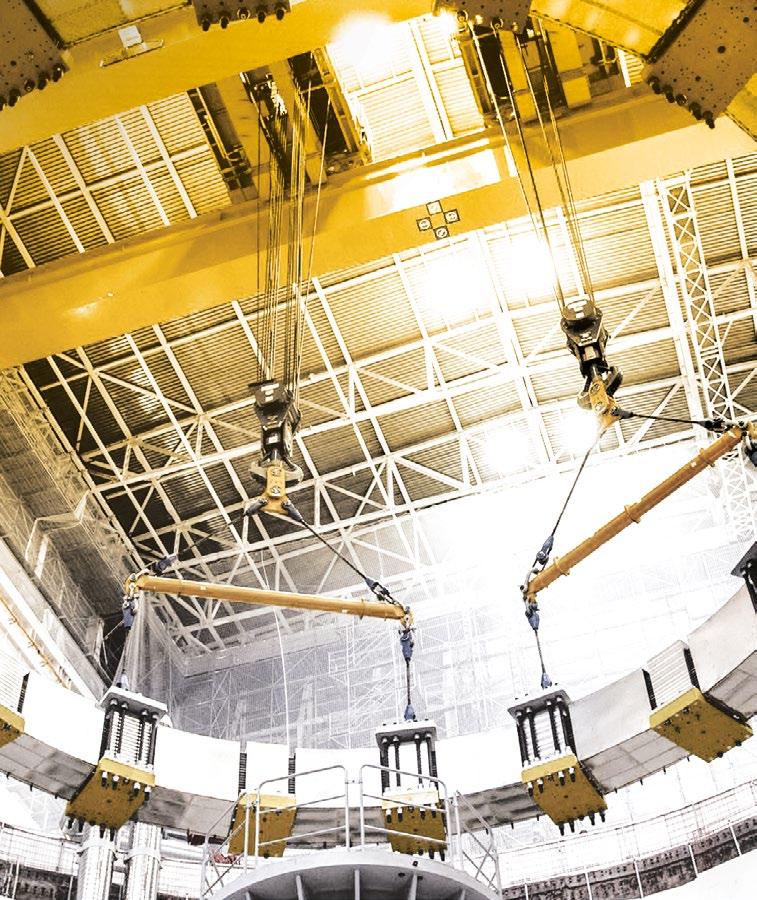
 A central column will help to brace the sectors of the vacuum vessel as they are aligned and welded. Each sector will be suspended from a radial beam like the one seen here during docking tests.
A central column will help to brace the sectors of the vacuum vessel as they are aligned and welded. Each sector will be suspended from a radial beam like the one seen here during docking tests.

As Chair of the ITER Council from 1 January 2020 to 31 December 2021, I can confirm that the ac tors of the ITER Project—the ITER Organization, the Domestic Agencies, and the representatives of the Members—have managed with determination and anticipation to make the most of the difficult circumstances caused by the Covid-19 pandemic. We were used to meeting in person; this became impossible. We counted on in-person factory ins pections; we were forced to innovate with remote technologies. We were on track in working accor ding to the Baseline 2016 schedule; we now know that the project schedule and cost must be re-ba selined to reflect the new reality accurately.
I salute the progress that was made over the past two years despite the challenges, and watch with pride (from afar) as the ITER machine and plant are assembled from contributions delivered by each of the Members. Thanks to the untiring effort of all who are committed to this project, the worst was avoided and the forward momentum was maintained. The challenges should never distract us from the sense of pride and partnership at what we are achie ving together as the One-ITER team.
The ITER Project is progressing, but at a slower rate than planned. The coronavirus has created new delays and exa cerbated some of those already present. In-kind contributions are still the key driver for assembly and installation to progress and the ITER Organization and the Domestic Agencies must continue to work in the most integrated way. I encourage all Members to meet their in-kind and in-cash commitments to enable the successful implementation of the project construction strategy.
As a Chinese proverb reads, “The going may be tough when one walks alone, but it gets easier when people walk together.” While the survival of humankind is challenged by energy shortage and climate change, we should stren gthen our belief in building a fusion community of shared future, we should stay more determined to realize fusion as a source of energy, and we should be confident in the innovative development of an alternative energy!
Finally, I must express my deepest sadness at the untimely passing of Director-General Bernard Bigot in May 2022. I can personally speak to his devotion and dedication to the project, and to the very positive legacy his seven years of strong leadership leave behind him. My sincerest condolences to all those who knew him well.
LUO DELONG Beijing, China The full assembly arena stretches out before us: the vast Assembly Hall where machine components are prepared for handling and installation and, on the far end, the machine well.
The full assembly arena stretches out before us: the vast Assembly Hall where machine components are prepared for handling and installation and, on the far end, the machine well.
The global pandemic has lasted longer than any of us had hoped; at the same time, the resilience of the ITER community in the face of pandemic-induced challenges has revealed the underlying strength of the ITER collaboration. The ITER Organization and the Domestic Agencies are collaborating closely to deflect the most serious consequences of supply chain and transport issues. Improving anticipation in order to transport several deliveries on the same boat, re-ordering manufacturing and installation sequences, and increasing parallel work in assembly zones are some of the tools we are employing to minimize project delays.
The institutional reform of the past years, including the adoption of world-class project management and systems engineering tools, has facilitated the management of the project in these unprecedented times, as has the confidence and trust between the Members that has strengthened organically in the 15 years since the ratification of the ITER Agreement. Not all delays will be recoverable, however. As shared with the ITER Council in November 2021, the late delivery of major components due to the pandemic—and also due to technical challenges encountered in the manufacturing of some of the first-of-a-kind components—has created irremediable delay to our goal of First Plasma in a re-baselining exercise to provide the Management Advisory Committee and the ITER Council with a first Updated Baseline proposal for discussion.
The ITER community should absolutely feel proud of the amazing work that has been performed so far, the work being performed every day, and our determination to face the challenges that lie ahead. In 2021, we passed the 75% completion mark on the road to First Plasma. Many of the risks associated with our never-before-manufactured components have been retired now that the components are arriving on site, passing all tests, and integrating into the machine exactly as planned. Contractors for machine assembly and the installation of plant systems in the Tokamak Complex are fully mobilized on site. Steady progress is being made in the installation of the broader ITER plant through the various “balance of plant” contracts. The management and oversight of all of these activities by the ITER construction teams and our Management-as-Agent contractor MOMENTUM is now practiced and efficient.
As I write these words, the team on site is planning for a major milestone: the transfer into the Tokamak pit of the first complete vacuum vessel sector sub-assembly. This extraordinary operation will be a proud day for the ITER program—testimony to the vision of our founders, the industrial expertise of our Members, and the talent of our teams. A second vacuum vessel sector is already in sub-assembly tooling; however, before this second “section” of our plasma chamber can be welded to the first, we must receive notice that the French nuclear authorities (Autorité de Sûreté Nucléaire, ASN) have lifted the regulatory Assembly Hold Point based on the ITER Organization’s detailed safety file. This is a priority for our organization and we are working actively to fulfil all requests for complementary information that have been made during our exchanges with the regulator.

I would like to thank the outgoing Council Chair, Mr. LUO Delong, the Chairs of the ITER Council advisory boards, as well as all the members of these bodies for the their dedication and commitment under rather extraordinary circumstances during their two-year terms ending December 2021.
The support of the ITER Members has been a constant through all of the years that I have led the ITER Project. They share with us the commitment to deliver and operate the ITER facility as a demonstration of the feasibility of hydrogen fusion to provide a safe, environmentally friendly, and virtually unlimited source of energy for future generations.
BERNARD BIGOT St. Paul-lez-Durance, April 2022

Civil structures and building services are constructed by the European Domestic Agency, Fusion for Energy, in conjunction with its Architect Engineer ENGAGE. Each area or building is handed over to the ITER Organization at an agreed level-of-completion milestone. In 2021, all platform coordination was transferred from Fusion for Energy to the ITER Organization.
Buildings in place Buildings in progress Buildings to come

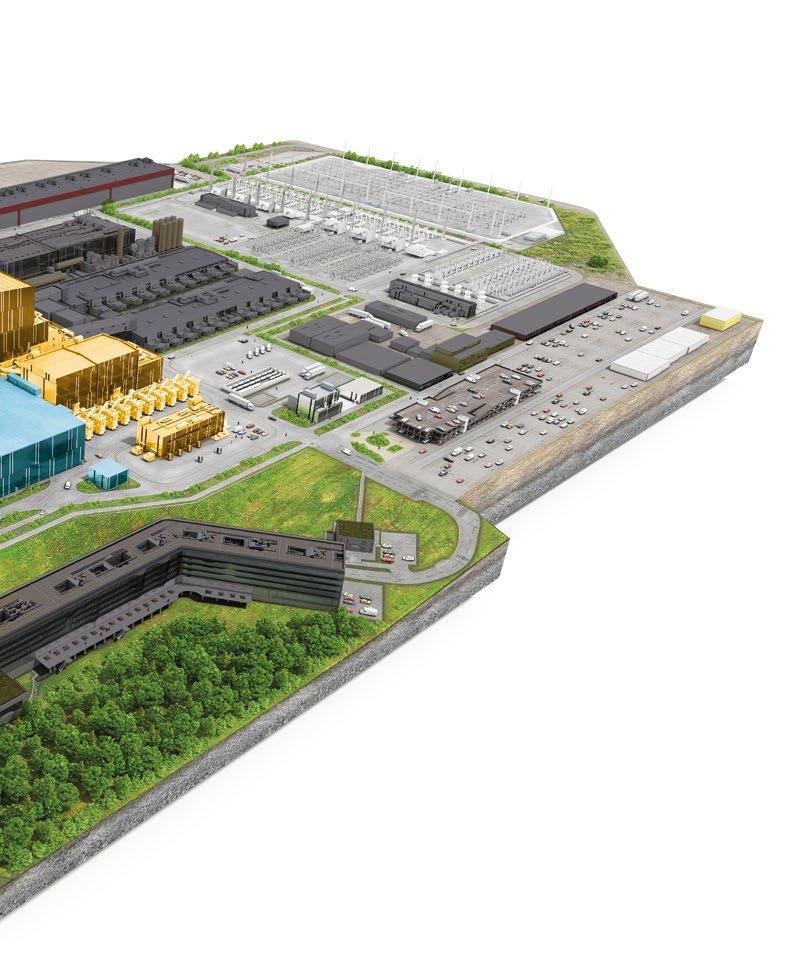




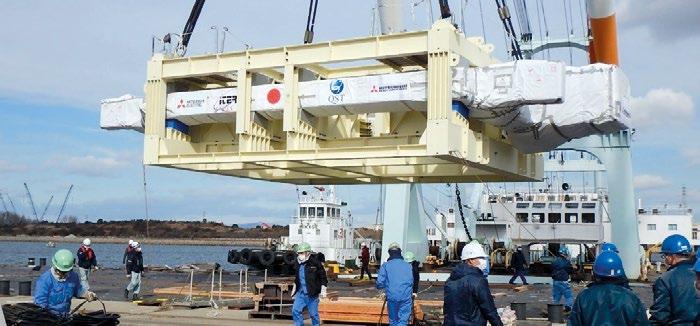
 The first ITER magnet, poloidal field coil #6 (PF6), is lowered into the machine assembly pit in April.
Six toroidal field coils are delivered to the ITER site in 2021 by Europe and Japan.
The first ITER magnet, poloidal field coil #6 (PF6), is lowered into the machine assembly pit in April.
Six toroidal field coils are delivered to the ITER site in 2021 by Europe and Japan.
The steady ballet of huge steel components transiting through the ITER Assembly Hall is an extraordinary sight to see. Some of these unique pieces require only a few weeks of staging before moving on to their place in the Tokamak pit, where the machine is being assembled from the base up. Others spend months on dedicated tooling, with teams moving all about them to measure, align, attach, equip, test, or rig as part of scripted pre-assembly activities. In a major realization this year, the elements for the first vacuum vessel section were assembled and aligned to within all expected tolerances—an achievement that smooths the way for the similar production of eight other vacuum vessel sub-assemblies in the months and years ahead.
Major component arrivals – Despite pandemic-related maritime transport issues, the ITER Members were able to deliver 34 “highly exceptional loads” in 2021, including six toroidal field coils (Europe, Japan), two central solenoid modules (United States), one vacuum vessel sector (#1(7) from Korea) and large feeder components (China). In addition, Europe completed two poloidal field coils (PF5 and PF2) on site and transferred them to the ITER Organization following cold testing. In the Cryostat Workshop, Indian contractors have nearly completed the final cryostat section—the top lid.
First vacuum vessel sub-assembly – On one of the tall sector sub-assembly tools in the Assembly Hall, final alignment was achieved on the first sub-element of the ITER plasma chamber—one vacuum vessel sector (#6), two toroidal field coils and thermal shield panels were aligned to within 1 mm of tolerance in the radial, toroidal and vertical directions. The 1,200-tonne sub-assembly—the first of nine that will form the machine torus—will now be transferred into the assembly pit, where supports are ready to receive the radial beam that suspends it as confirmed by radial beam docking tests this year. Two more sub-assemblies—built around vacuum vessel sectors #1(7), already docked, and vacuum vessel sector #8—will be created side by side in 2022 on the Hall’s twin tools. Significant gains in individual preparation time are expected based on lessons learned from the first operation.
Major contracts – The execution of major contracts (TAC-1 and TAC-2 for machine assembly; TCC-0, TCC1 and TCC-2 for systems assembly in the Tokamak Complex) is progressing under the oversight of the ITER Organization and its Construction Management-as-Agent (CMA) contractor MOMENTUM; another major contract for sector-to-sector vacuum vessel welding has entered the preparatory mobilization phase. “Balance of Plant” installation packages have reached 65% completion and the first of six contracts—equipment installation in the Magnet Power Conversion Buildings—was completed in 2021. To match the increasing pace of activity, the ITER Construction Domain and the Procurement & Contracts Division have formed a joint integration team for materials delivery to ensure that the components and tools associated with each construction work package are delivered to the worksites efficiently and punctually.


In-pit – In 2021, contractors to the Indian Domestic Agency finalized the welding of the cryostat lower cylinder to the cryostat base within all required tolerances. The central column of the major in-pit assembly tool is now in place, where it will help to support, align, and stabilize the vacuum vessel sub-assemblies during field joint welding. Components required to be in position before the arrival of the first vacuum vessel section— the lower cryostat thermal shield section, poloidal field coils #6 and #5, all toroidal field coil supports, the first correction coils, and three spare pre-compression rings—were all installed during the year. The completion of these assembly steps, plus the installation of in-pit ventilation (HVAC), the construction of a work floor, and other preparatory tasks, means that the Tokamak pit is officially ready to receive the first vacuum vessel sub-assembly.

The Tokamak Complex – The installation of cryolines, cooling water lines, busbars, fast discharge units, cable trays and supports continues to progress level by level. Because the volume of installation work and contractor co-activity in the Tokamak Complex is high, the ITER construction teams are placing particular focus on the organization and optimization of installation sequences. The detailed sequences in the port cell shafts, for example, were optimized during the year through an in-depth constructability assessment that included the Holistic Integration Team (HIT) and the technical experts of the systems concerned. The last four tanks of the water detritiation system have been installed in the Tokamak Complex, as well as nine major magnet feeder components including the first captive components at level L3. TAC-1 teams who have completed qualification have started on the first of 300 superconducting feeder joints that need to be created as part of assembling the magnet feeders.
Balance of plant – Major progress has been achieved on plant support systems, with the completion in 2021 of equipment installation in the heat rejection zone, the cryoplant, the reactive power compensation and harmonic filtering area, and the buildings for magnet power conversion (First Plasma scope). These areas have been handed over to the ITER Organization and commissioning activities have begun. The team in charge of the heat rejection zone has completed the leak tightness tests of the basins, tested hundreds of input/output signals, and started “warm commissioning”— when motors are coupled with pumps and the first water begins circulating. In the cryoplant, close to five kilometres of cryolines and warm lines successfully passed leak testing and operators have begun filling the gaseous helium tanks. Turnover from installation to commissioning was also completed in 2021 for the Site Services Building (chilled water, demineralized water, and compressed air/ breathable air systems).


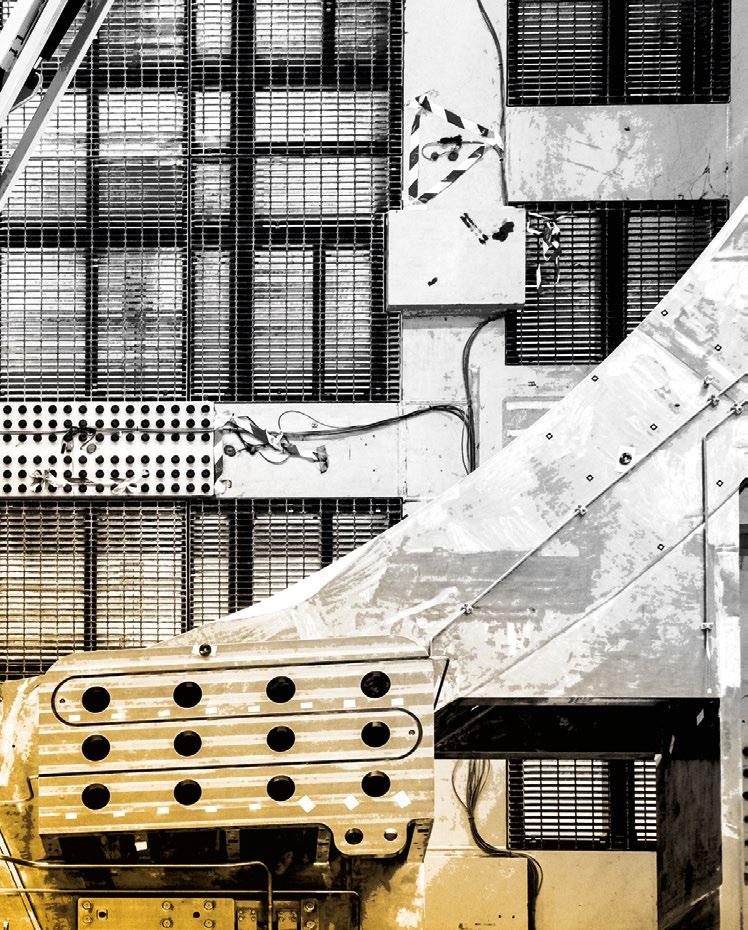
The ITER Members are in the final stages of procuring the major components that will constitute the core machine. Ten superconducting magnets reached the site in 2021, joining the six that were delivered last year; globally, manufacturing completion is now above 97% for the central solenoid, poloidal and toroidal field magnet systems. Vacuum vessel sector manufacturing and delivery has continued steadily, but has been impacted by pandemic-related contractor delay, some technical challenges, and external factors such as the backlog in maritime transport. The project schedule going forward will be driven by the finalization of these key plasma chamber components.

Four Domestic Agencies are participating in the procurement of the complex ITER plasma chamber, which provides a high-vacuum environment for the plasma, improves radiation shielding and plasma stability, acts as the primary confinement barrier for radioactivity, and provides support for in-vessel components such as the blanket and the divertor. Korea is supplying four main sectors and all equatorial ports, lower ports, and gravity supports; Europe is manufacturing five main sectors; Russia is contributing all upper ports; and India has completed the procurement of in-wall shielding (~ 9,000 blocks plus support ribs, brackets and fasteners). After the arrival of the first vacuum vessel sector in 2020, a second sector was delivered by Korea in August—once tested and equipped with instrumentation, the sectors are docked vertically in tooling for sub-assembly with thermal shield panels and two toroidal field coils. By the end of 2021, the assembly team had completed the first vacuum vessel sub-assembly (sector #6), achieving all required tolerances. Europe is planning to deliver the first sector of five in 2022; a third Korean sector is also 99% complete. All other vacuum vessel components are advancing on schedule.
Just as a thermos provides the insulation to keep liquids warm—or cold—the ITER cryostat raises a vacuum barrier around the superconducting magnets that limits the possibility of heat exchange with the outside environment. The 30 x 30 metre vacuum chamber is under the procurement responsibility of India, which has manufactured 54 segments and shipped them to ITER for assembly into four large sections; the sections, in turn, are lowered into the Tokamak pit and welded. In 2021, the first in-pit welding operation was completed as the lower cylinder was joined to the cryostat base. Work has also started to assemble the 665-tonne top lid in the Cryostat Workshop on site. When finished in 2022, it will join the upper cylinder in storage until needed during the later phases of core machine assembly.
From 43 kilometres (700 tonnes) of niobium-tin superconductor provided by Japan, the United States is winding the six modules that will be stacked to form the ITER central solenoid, plus one spare. The first two modules arrived on site in 2021, as well as some of the bespoke tooling for lifting and assembling the modules in the ITER Assembly Hall; five other modules (including one spare) are in production. Standing 18 metres tall at the very heart of the ITER Tokamak and weighing 1,000 tonnes, the central solenoid will generate an intense magnetic field that will induce an electrical current inside the plasma and initiate the heating process.
Six ring-shaped poloidal field magnets will encircle the ITER vacuum vessel and toroidal field magnet structure to shape the plasma and contribute to its stability by "pinching" it away from the walls. These massive components—up to 24 metres in diameter—are under the procurement responsibility of Europe (PF2-6) and Russia (PF1), based on niobium-titanium conductor manufactured in China, Europe and Russia. Half of ITER’s six ring-shaped poloidal field coils have now been completed and successfully cold tested—one in 2020 (PF6), and two in 2021 (PF5 and PF2); three others including the smallest (ø 9 m, PF1) and the largest (ø 24 m, PF3/ PF4) are in an advanced stage of manufacturing. Coils PF6 and PF5 were installed at the bottom of the Tokamak pit on temporary supports during the year prior to the planned lowering of the first vacuum vessel sector sub-assembly.
The toroidal field coil procurement effort has been one of the longest of the ITER program, initiated by Procurement Arrangements signed in 2007 and 2008. Six Domestic Agencies took part in the procurement of over 100,000 km of niobium-tin superconducting strand (China, Europe, Japan, Korea, Russia and the United States); now, Europe and Japan are completing the procurement of 18 toroidal field coils plus one spare. Eleven toroidal field coils have arrived on site, including six in 2021; the first two of these have already been integrated into the first sub-unit of the ITER vacuum chamber. Also in 2021: Europe completed its final winding pack (the superconducting core of the coil) in December, and Japan machined the final set of toroidal field coil cases. The primary function of the toroidal field magnets is to produce a magnetic field that confines the plasma particles.
In a tokamak device, the divertor is the component at the base of the plasma chamber that extracts heat and ash produced by the fusion reaction, minimizes plasma contamination, and protects the surrounding walls from thermal and neutronic loads. It is made up of 54 cassette assemblies—each one formed from an actively cooled structural backbone (the cassette body) and plasma-facing elements covered in tungsten tiles (the dome, inner vertical target and outer vertical target) that are carefully engineered to withstand large heat and particle fluxes. Europe has finalized contracts for all cassette bodies (59 including spares) and manufacturing is underway. The qualification phase is also ending for the plasma-facing elements of the divertor: Russia has delivered a full-scale prototype of the dome to ITER for testing, Japan has awarded a second contract for six outer vertical target units, and Europe has delivered a full-scale prototype of the inner vertical target to ITER for testing.

The blanket lines the inner wall of the vacuum vessel, protecting the reactor by absorbing most of the radiative and particle heat fluxes from the hot plasma and stopping or slowing most of the fusion neutrons in its thick steel shield blocks. Its plasma-facing first wall, in beryllium, is also designed to limit the influx of impurities in the plasma through erosion. Series manufacturing is advancing on 440 shield blocks in China and Korea. The procurement of two types of plasma-facing first wall panels (normal and enhanced heat flux panels) is also progressing; in 2021, Europe awarded two production contracts for the first set, while China and Russia continue to advance R&D and prototyping on higher heat flux panels, which are designed for 4.7 MW/m².
• The energy-generating devices of ITER’s electron cyclotron heating system—gyrotrons—require a number of auxiliary systems such as water cooling equipment, cryocoolers and microwave-beam forming systems. A first batch of auxiliaries has been delivered by Russia. 1

• The first superconducting elements of the central solenoid have arrived on site. Modules one (September) and two (October) were delivered by the United States after rigorous factory acceptance testing, including the demanding Paschen voltage tests carried out in a helium environment. These are the most sensitive quality checks for electrical insulation. 2
• Manufacturing has begun on the first of four port plug test stands in Russia. Test stands delivered to ITER and to the European Domestic Agency will ensure that each port plug passes a series of environmental and functional tests before installation in the machine.
• Teams working at the ITER Organization, in Russia, and in the United States have concluded studies to find the best material for shielding the ITER diagnostic systems that are housed close to the plasma in port plugs. Boron carbide (B4C) has been chosen for its excellent neutron blocking properties, low density, high melting point, hardness, and thermal stability. India has qualified “made in India” boron carbide blocks (photo) for its diagnostic systems after validating material production and machining feasibility. 3
• Indian contractors are welding the final section of the cryostat, the top lid. Each joint must be leak tested on both surfaces of the steel plate (top and underside), a process that takes about two days. The top lid is composed of 12 triangular segments, plus a central disk and a central lid. 4
• China has shipped all six bottom correction coils to ITER and the first two have been installed in the Tokamak pit. The fabrication of six side and six top correction coils continues at pace. 5



• A "virtual fit" tool developed by Europe is helping the vacuum vessel manufacturing team anticipate the challenge of final assembly—the moment when four sub-segments are brought together and welded to form the final 440-tonne sector. By visualizing alignment challenges and eventual clashes or gaps, the team is saving time and reducing risk.
• Contractors to the Chinese Domestic Agency have completed an important part of the gas injection system— the distribution manifolds that carry gas species from the tritium plant to the ITER machine and back for processing.
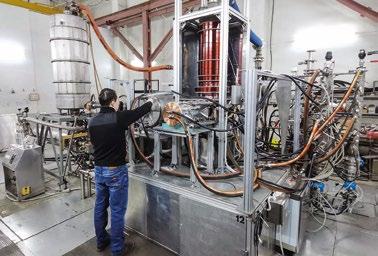
• The Blanket Integrated Product Team was formed to help different organizations working independently to produce first-of-a-kind blanket components to coordinate and work with a shared sense of purpose and ownership. The team celebrated its 100th meeting in 2021.
• Teams in the United States are developing radiationhardened (rad-hard) electronics for ITER’s vacuum auxiliary system. The electronics will be mounted at 68 locations just outside the concrete bioshield to monitor the vacuum system for leaks and other potential issues.
• European contractor ASG Superconductors (Italy) has completed the tenth and final D-shaped superconducting winding pack of Europe’s toroidal field coil procurement program.
• Each of ITER’s 31 magnet feeders is assembled on site from three feeder segments shipped by China. Of approximately 100 large components expected, 21 have arrived on site since 2018 and 9 have been installed in the Tokamak Building. In China, manufacturing completion has passed 60%. 6
• Russian specialists have successfully completed vacuum pressure impregnation of poloidal field coil #1 (PF1). Nine metres in diameter, 200 tonnes, this ring coil will be the last ITER magnet installed in the Tokamak pit. 7
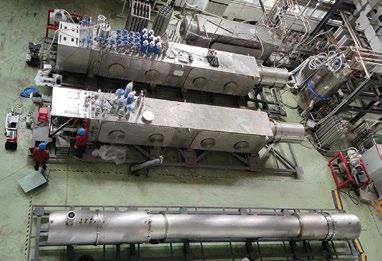
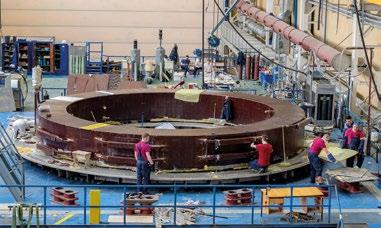

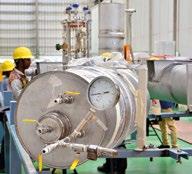
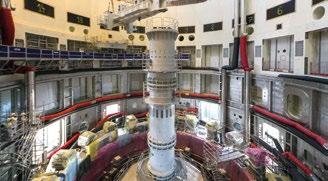
• A complex system of cryogenic lines produced in India will distribute the cooling power generated by the ITER cryoplant to clients throughout the installation. Four years after manufacturing was initiated, the last batch left INOXCVA India’s facility in July. Total scope included 4 km of cryolines (operating at temperatures ranging from -269 to -193 °C) and about 6 km of return lines for warm gases. 8
• Vacuum vessel sector #1(7), seen here packed for transport from Korea to France, reached ITER in August—the second of nine sectors required for assembly of the ITER plasma chamber. Thanks to lessons learned on the first sector, sector #1(7) was fitted with sensors, cables and flux loops in approximately 17 weeks at ITER, half the time the same operations took the first time around. 9
• The in-pit column tool, procured by Korea, will support, align, and stabilize the vacuum vessel sub-assemblies as they are joined and welded. The central column—which provides worker access to different levels of the vacuum vessel—is now in place, and one of the nine radial beams was successfully docked during fitting tests. 10
• Planning for the ITER Hot Cell Facility is the coresponsibility of the ITER Organization (responsible for requirements engineering, conceptual design, and the design, procurement, installation and commissioning of process equipment) and the European Domestic Agency (construction and commissioning of civil works and building services). Two major milestones related to design activities were achieved by the integrated project team in 2021: the conceptual design review for building civil works and building service systems, and the Hot Cell Facility review (integrating all systems associated with the Hot Cell to ensure that the integrated solution fulfils the required functions).
The careful work of producing a double pancake—the building block of ITER’s poloidal field coils. The European Domestic Agency Fusion for Energy finalizes two coils in its on-site winding facility in 2021.


• Fifty-four divertor cassettes form the backbone of a unique system designed to exhaust waste gas from the ITER machine and minimize impurities in the plasma. In Europe, the final contract for divertor cassette manufacturing has been signed and fabrication is underway, with delivery expected on this final group between 2025 and 2027.
©
11
Walter Tosto• A set of spare pre-compression rings manufactured in Europe has been lowered into the Tokamak pit. Made of glass fibre/epoxy composite, six pre-compression rings in total will hold the toroidal field coils at top and bottom to help them resist electromagnetic forces.

• The ITER cryoplant has entered pre-commissioning, as tests are carried out to verify control-command systems, leak tightness, cleanliness, and safety. Over the last 3.5 years, the teams have assembled and installed 5,000 tonnes of equipment and many kilometres of piping (approximately one million work hours). 12
• The heat rejection zone has been formally handed over by the construction teams to the operations/commissioning team. Commissioning activities have started. 13
• The ITER magnet program advanced strongly in 2021—11/19 toroidal field coils, 3/6 poloidal field coils, and 2/7 central solenoid modules have now been delivered.
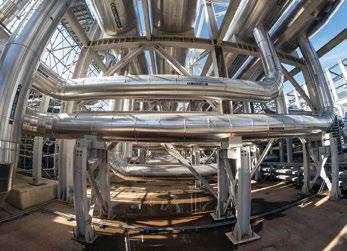
• A multiyear qualification program in Russia has concluded with the successful manufacturing and testing of a fullscale divertor dome prototype. It was shipped to ITER for divertor integration trials, where prototypes of all divertor components produced by Europe, Japan and Russia will be assembled for the first time. 14
• China and Korea have completed the manufacturing of all AC/DC converters required by First Plasma to convert magnet power supply; all but two units are on site.

2021• Korean contractors have successfully completed the factory acceptance test on the first ITER vacuum vessel gravity support. Under the 8,500-tonne plasma chamber, nine gravity supports will allow for thermal expansion and sustain loads in the radial, toroidal and vertical directions. 15
• Since 2018, tests have been run on the SPIDER experiment at the ITER Neutral Beam Test Facility (Italy) to further understand the physics and to validate the design of the neutral beam negative ion source that will operate at ITER. Valuable lessons were learned during the first three-year campaign. The team will now carry out a series of upgrades before resuming operation in one year. (In the photo, the beam source is removed for engineering maintenance). 16
• Fabrication is underway in Europe on the ITER cryopumps— six torus and two cryostat units that maintain ultra-high and high vacuum in the vacuum vessel and cryostat respectively by trapping particles on their extremely cold surfaces. These highly unique components—the result of a lengthy research and development program carried out by ITER Organization and European teams—are expected on site in 2022. . 17
• Japan’s QST Institute (National Institutes for Quantum and Radiological Science and Technology) has completed eight high-power microwave sources (gyrotrons) for ITER’s electron cyclotron resonance heating system and the first two units will ship to ITER in early 2022. 18
• In Japan, contractors have mounted prototype plasmafacing units of the ITER divertor outer vertical target on a test assembly for high heat flux heating. 19

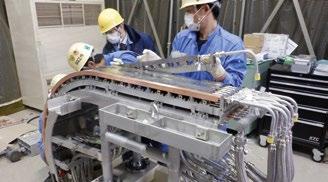


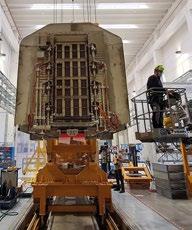
• The seven ITER Domestic Agencies have collectively finalized 39% of diagnostic scope.
• The contract for the supply and assembly of the nonsuperconducting vertical stability coils has been placed.
• India is advancing the manufacturing of the ion source and beamline components for the diagnostic neutral beam, which will probe the fusion plasma to detect helium ash concentrations.
• As part of ITER’s tritium breeding test program, four distinct test blanket systems are planned for installation in two dedicated port plugs. R&D and mockup testing have been underway since the successful completion of all conceptual design reviews in 2021.
 All the pieces of the cryostat top lid reach India’s on-site Cryostat Workshop in January. By the end of the year, work to assemble this final section of the cryostat is nearly completed.
All the pieces of the cryostat top lid reach India’s on-site Cryostat Workshop in January. By the end of the year, work to assemble this final section of the cryostat is nearly completed.

Following the completion of the tokamak core and system-by-system commissioning, all systems are operated together (magnets, power supplies, cooling, cryogenics, vacuum, etc.) to make sure that the integrated whole performs as expected. First Plasma completes this phase by demonstrating the successful integration of the tokamak core and principal plant systems, and showing that the device is capable of achieving plasma operation. A period of engineering operation will follow First Plasma to commission the magnet systems to full current operation and determine the (toroidal) magnetic axis of the tokamak.
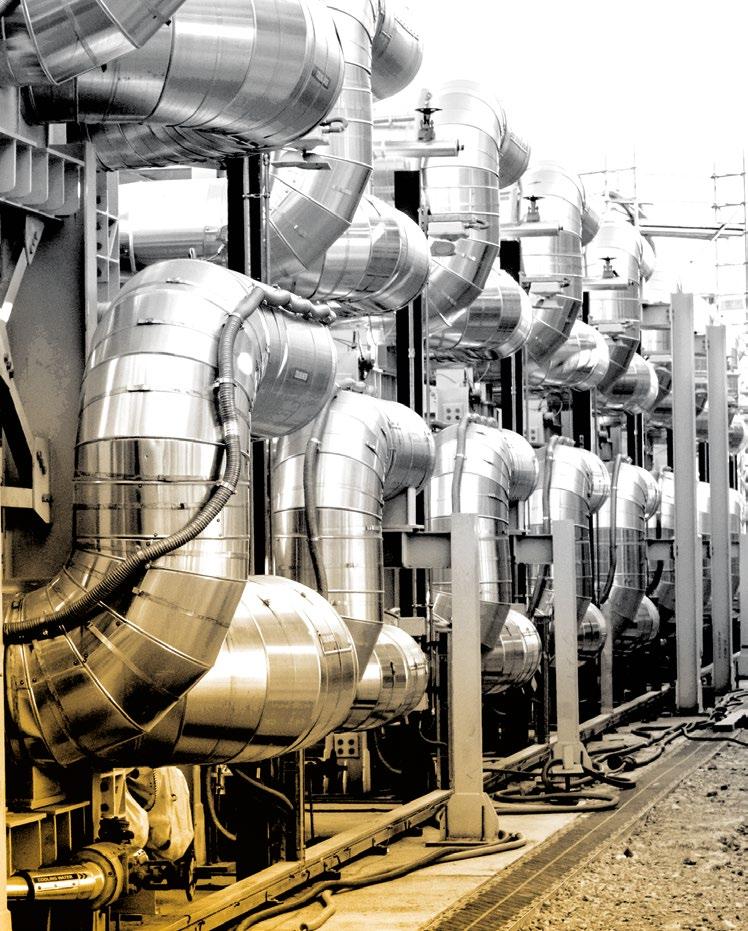
Two experimental campaigns in hydrogen/helium (i.e., non-activating fuels), during which all of the tokamak, plant and auxiliary systems are commissioned with plasma (up to 15 MA current) to their highest performance and operational experience is acquired. The characterization of key plasma parameters in L-mode and H-mode, the development of plasma scenarios, the exploration of different modes of operation, and the achievement of key physics goals (e.g., power load control and ELM control) are also part of this phase.
The experimental phase using deuterium/deuterium-tritium fuels. The initial FPO campaign is designed to achieve significant fusion power production in the range of a few hundred MWs for durations of at least one minute as rapidly as possible. It will be followed by two experimental campaigns in which ITER’s three fusion performance goals (Q ≥ 10 for 300 to 500 seconds, Q ≥ 5 for 1000 seconds, Q ≥ 5 in steady-state scenarios) are demonstrated, scientific and technical mission goals are pursued (including the test breeding module program), and burning plasma physics is studied in detail. This will be followed up by further campaigns in which the physics basis for demonstration of fusion reactor design and operation is developed and the ITER neutron fluence goal is demonstrated. The facility will be operating with all of its baseline ancillary systems at full performance and upgrades to these ancillaries will be implemented if needed.

Even in the early phases of pre-fusion-power operation, ITER will need an effective method to mitigate the consequences of plasma disruptions—instabilities that may develop within the tokamak plasma. The ITER Organization is designing a disruption mitigation system based on shattered pellet injection. A shattered pellet injector is a device that preempts disruptions by releasing a spray of frozen hydrogenneon pellets into a plasma. The frozen pellet fragments rapidly decrease the plasma temperature, thereby dissipating energy and minimizing potential damage to plasma-facing surfaces.
Under the coordination of the ITER Disruption Mitigation System Task Force, scientists and engineers are running shattered pellet injection experiments on operating tokamaks to optimize the performance of the technology and to provide the best possible basis for how to scale it to ITER. Following experiments initiated at JET (2019) and KSTAR (2020), the ITER Organization has launched a project together with the Max Planck Institute for Plasma Physics (IPP), in Garching, Germany, to install a shattered pellet injection system on the ASDEX Upgrade tokamak. The system is specifically designed to examine the impact of different pellet shatter sizes and velocities on the mitigation process. As part of the laboratory tests, the fragment plumes have
Planning for ITER experimental exploitation requires the design of plasma simulation tools and control systems. Key ingredients for these tools are the models that simulate the measurements from the ITER plasmas, which will be used to control them as well as models to simulate the actuators to impact plasma behaviour and thus control.
Simulating the measurements that will be acquired from ITER plasmas requires the development of so-called synthetic diagnostics. These can be used to predict what will be seen on the real sensors, which will in turn help with the design of the diagnostic systems and in building the analysis tools that will interpret measurements.

This activity has seen a major development through the joint efforts of the science and diagnostics divisions of the ITER Organization and the strong support of the Diagnostics Topical Group of the International Tokamak Physics Activity.
been recorded and characterized for a large number of different pellet types using high-speed cameras providing first-of-a-kind, high-resolution measurements of the shattering process, which will be used for future modelling of this key process for ITER. The shattered pellet injection system and upgraded diagnostics will be put to work in 2022 in a series of experiments conducted by the ITER Disruption Mitigation System Task Force together with IPP and the EUROfusion consortium.
In addition, the systems that act on the plasma and their effects need to be simulated as well. To this purpose, workflows to simulate the ITER heating and current drive systems (namely neutral beams, ion cyclotron and electron cyclotron radiofrequency heating) and the effects that the fast ions generated by these systems have on the plasma have been completed within the ITER Integrated Modelling and Analysis Suite (IMAS). These allow the simulation of the complex effects that take place when various heating systems are used simultaneously in ITER (e.g., the coupling of ion cyclotron waves on the fast ions injected by the neutral beams) as well as their impact on the triggering of plasma instabilities (Alfvén instabilities).
The high thermal and magnetic energies of ITER plasmas and the use of all-metal plasma-facing components mean that the transients resulting from uncontrolled edge-localized modes (ELMs) and unmitigated disruptions can lead to significant damage and reduction in component lifetime in ITER. Runaway electron formation during the disruption current quench is also a significant concern, given that the runaway beam may carry a large fraction of the plasma magnetic energy and deposit this energy in extremely localized areas, which can in turn cause large localized erosion in a single event and lead to in-vessel water leaks. Given the importance of transient loads for ITER experimental availability, the ITER Council requested its Science and Technology Advisory Committee (STAC) to review progress on the evaluation of plasma-facing component behaviour under transient loads and their impact on the execution of the ITER Research Plan. The evaluation performed by the ITER Organization concluded that melting of the divertor tungsten monoblocks is expected to be avoided under uncontrolled ELM impact during H-mode operation in PFPO-1. However, on the basis of results from the WEST tokamak, surface cracking under ELMs will take place on the ITER divertor even if its tungsten surfaces are operated at the low temperatures expected during PFPO-1. Surface cracking of the tungsten divertor can potentially decrease its lifetime; risk mitigation therefore calls for transient heat fluxes to be reduced from the beginning of H-mode operation.
The recommended risk mitigation measure to reduce early phase tungsten surface damage (in addition to the disruption mitigation system that will be fully operational), is to advance the design and procurement of the full ELM control coil power supply system so that it is available for PFPO-1, instead of for PFPO-2 as foreseen currently. In addition to reducing potential divertor damage, gaining experience of ELM control during H-mode operation in PFPO-1 offers important opportunities for risk mitigation within the Research Plan. Considering the evaluation presented by the ITER Organization, STAC recommended that the project plans for the procurement and installation of the complete ELM control coil power supply system in time for ELM mitigation during PFPO-1.
Disruption-free ITER operation and the achievement of high plasma performance requires magnetic fields with a high degree of toroidal symmetry. Manufacturing and assembly inaccuracies can cause field asymmetries leading to increased first wall heat loads, a loss of plasma confinement and an increase in plasma disruptivity. Although ITER is equipped with a set of error field correction coils to correct for such inaccuracies, it is important to keep them to a minimum. Asymmetries introduced during the manufacturing and assembly process must be kept as low as possible and mandatorily within the correction coils’ capabilities.
To ensure that the magnetic field structure provided by the as-built magnet system fulfils the symmetry requirements for successful ITER operation, a transverse working group— the Magnetic Field Symmetry Assessment Working Group— was created at the end of 2020. The group is modelling the full geometrical description of the proposed as-built (i.e., as-manufactured and as-proposed-to-install) coil set in its final operational state—including changes to coil shape and position due to the cool-down to cryogenic temperatures and energization—to calculate the threedimensional magnetic field structure that will be provided by the magnet system. The calculated structure is then used by experts from ITER and collaborators to evaluate the impact on plasma performance through the computation of the so-called overlap field. Depending on the outcome

of this performance evaluation, the proposed installation may be acceptable from the operational point of view or recommended for revision.
The above assessment workflow has been applied to support the assembly of the first vacuum vessel sub-assembly in 2021. In particular, it was used to guide criteria for the alignment of the toroidal field coils of the first tokamak sector.
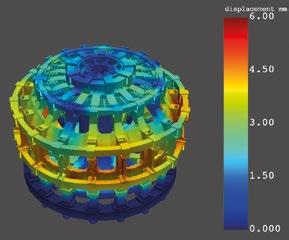


ITER tests its real-time dedicated framework on KSTAR

The ITER plasma control system will ensure that each pulse is executed correctly by using data it receives from diagnostic sensors to apply sophisticated algorithms, which in turn generate the commands that control plasma characteristics. Measurements, calculations and actions must be performed precisely on time—something that the operating systems and software that we use in our everyday lives, which are not deterministic, could never guarantee. For ITER’s strict time requirements a real-time operating system is required, with specific mechanisms for managing execution time. Because the design, development and verification of real-time software is a complex and often lengthy process requiring multiple iterations until all timing relationships are satisfied and the application is stable and predictable, ITER is designing and developing a dedicated real-time framework (RTF). The real-time framework is a flexible high-performance software base that facilitates the development and deployment of complex real-time applications such as data processing applications in ITER diagnostic systems.
In the first practical application of the framework, an RTFbased prototype system developed for Thomson scattering diagnostics data acquisition and processing by ITER and the Lodz University of Technology (Poland) was tested in 2021 on the Korean tokamak KSTAR. The functional and performance tests carried out under real working conditions were important not only for the evaluation of the prototype Thomson scattering system itself, but also for the functionality and performance of the framework and the developed algorithms. It was the first evaluation of a highperformance data processing application implemented using ITER’s real-time framework for the needs of plasma diagnostics. The results obtained confirmed that it performs as expected, and that it can be used successfully in applications requiring multi-threaded high-performance data processing.
Working toward a Concept of Operations
ITER is an experimental facility designed for the exploration of technologies for future fusion power plants. To achieve this, the operation of the facility shall enable access to a wide variety of operational domains and scenarios, including operating in proximity to operational limits and conditions. ITER is not a power plant—and therefore the associated requirements and operational protocols may not be normative of those for future power plants.
Work is ongoing between the ITER operations and engineering teams to establish the future ITER Concept of Operations.
The purpose is to define, for each plant system, how it will be operated in order to accomplish stated operational goals, and also define what will be the operational modes and states, the operating limits and conditions, and the operational processes and operator actions required to perform ITER tasks—during both normal and incident/accident conditions. As this work is underway, the operations group has already taken over the responsibility for the operation of the steady state electrical power network on site, and for site "utilities," a category that regroups the operation of demineralized water and compressed air production units.
Motors and pumps need to be turned regularly, valves have to be greased and operated, vessels need to be filled with inert gas to prevent corrosion … a wide variety of “preservation activities” must be carried out to maintain ITER machine and plant components in good condition until they are commissioned for operation.
Preservation activities begin at ITER when a component arrives on site, and continue after it is removed from storage and installed. These activities are particularly critical for ‘’captive’’ components that may need preserving for a decade or longer before entering service. (A captive component is typically a large item that, once installed, can no longer be easily removed.)
In addition to managing preservation activities associated with conventional plant equipment, the operations group will also be responsible for some unique requirements related to ITER’s first-of-a-kind systems. For example, maintaining the quality of the vacuum in the electron cyclotron heating system’s wave generators (called gyrotrons) during long-term storage will require a dedicated high voltage power supply.

Preservation requirements are defined before the equipment arrives at ITER and communicated to all responsible parties on site. To help improve the overall implementation and to track preservation activities, the ITER Organization has introduced web-based software called SPMat Mobile Companion that allows real-time reporting on preservation activities from technicians in the field. The new system provides optimum traceability and auditability, especially for safety-critical, protection-important components.
In the twelve months preceding First Plasma, a carefully orchestrated integrated commissioning phase will build up to readiness for plasma operations by integrating all the separate systems and demonstrating that they work together.
Even though it is still years away, preparations are already underway. The operations team is currently breaking down the activities in the technical baseline schedule into finer detail, identifying dependencies and planning technical and human resources. Detailed steps and required conditions, or pre-requisites, need to be established with a number of teams—including which investment protection functions need to be commissioned first, and which safety functions need to be active before integrated commissioning begins. Another important part of preparation is risk assessment, which aims to minimize the impact of unexpected events.
Integrated Commissioning officially starts when the cryostat lid is closed and responsibility is handed over to operations. The first activity will be to pump down the cryostat. Then, the in-cryostat components are leak tested, the coils and thermal shields are cooled down, and the vacuum vessel is conditioned through baking. Finally, the superconducting coils can be energized in preparation for the First Plasma campaign.
Integrated commissioning will be performed after each ITER assembly phase, after systems and components are installed and individually commissioned. Four assembly phases are planned: I (creation of the core machine), II (installation of blanket, divertor and in-vessel components), III (neutral beam heating, test blanket modules), and IV (tritium plant).




Against the backdrop of year two of the Covid-19 pandemic, the ITER Organization and the Domestic Agencies kept the project on its forward-moving trajectory—achieving key manufacturing and assembly milestones and gaining significant experience in the preparation of major components for installation in the machine pit. However, challenges reported in the manufacturing of some critical-path components, compounded by pandemic-related supply chain issues, are pushing back expected delivery dates and affecting the schedule for machine assembly. In 2022, the ITER Organization will complete an assessment of these delays and present a Baseline Update to the ITER Council. To date, the project has executed 75.8% of the work scope to First Plasma and achieved 63 highlevel ITER Council milestones.
Covid-19 – On site at ITER, the continuity plan in operation since the start of the pandemic in France has been effective in maintaining critical-path assembly and installation work. For ITER manufacturing worldwide, the pandemic’s effect on the industry and transportation sectors has translated to periods of partial or full shutdown in factories, delay in new contractor mobilization, reduction in the travel of experts and inspectors, difficulties in organizing maritime transport (especially for highly exceptional loads), and congestion at the loading and off-loading harbours. The ITER Organization and the seven Domestic Agencies are coordinating closely to offset the resulting delay in the delivery of components, with the understanding that some of the delay is incompressible. Project progress will continue to be measured against the Baseline 2016 schedule until the full impact of the Covid-19 pandemic can be assessed.
Revised construction strategy – As requested by the ITER Council at its twenty-eighth meeting in June 2021, the ITER Organization is working with the Domestic Agencies to prepare an update of Baseline 2016. The re-baselining effort will take into consideration all possible measures to minimize or recover delays to First Plasma, lessons learned and experience from completed first-of-a-kind components and assembly and installation activities, and missing items identified since the last major update to the ITER Baseline. The “fastest technically achievable” project schedule that results from this exercise will be the object of a focused independent review by a panel of project schedule and cost experts before presentation of the proposal to the ITER Council. In parallel, a strategic group has been formed at the ITER Organization to determine the path to ensuring that the start of Fusion Power Operation can be maintained in 2035. The ITER Organization is also working with the Domestic Agencies to identify schedule-saving opportunities in manufacturing and assembly activities. First-of-a-kind components – Many of the first-of-a-kind risks associated with ITER’s major components have been closed following the successful fabrication and delivery of two vacuum vessel sectors (Korea), eleven toroidal field coils (Europe and Japan), two central solenoid modules (United States) and three poloidal field coils (Europe). Successful firsts in the assembly arena are also lowering risks: in 2021, the first vacuum vessel sector sub-assembly was created on specialized tooling in the Assembly Hall within all expected tolerances—a major achievement that encourages confidence in the upcoming assembly of eight other vacuum vessel sections. Additionally, the experience gained across the project is improving the rate of work for next-in-series operations. The second vacuum vessel sector was prepared for assembly tooling in half the time of the first, for example. There was also a twelve-month schedule gain in the production of Europe’s poloidal field coil #2 in relation to the similar-in-size poloidal field coil #5. The project’s critical path continues to depend on the timely delivery of major components, including the vacuum vessel sectors supplied by Europe, and the assembly on site of the sub-components of the plasma chamber. The installation of plant system components in the Tokamak Complex is on the near-critical path.
 Poloidal field coil #6 (PF6) may be the second smallest of the ITER ring magnets in terms of diameter (10 metres), but a higher number of stacked pancakes (nine instead of six or eight), a greater number of coil turns (twice as many as PF1) and exceptionally heavy clamps cause it to weigh an incredible 330 tonnes.
Poloidal field coil #6 (PF6) may be the second smallest of the ITER ring magnets in terms of diameter (10 metres), but a higher number of stacked pancakes (nine instead of six or eight), a greater number of coil turns (twice as many as PF1) and exceptionally heavy clamps cause it to weigh an incredible 330 tonnes.
 Vacuum vessel sector #6, from Korea, becomes the first sector to be docked in tooling in April. A second sector (also from Korea) is received by the ITER teams in August.
Vacuum vessel sector #6, from Korea, becomes the first sector to be docked in tooling in April. A second sector (also from Korea) is received by the ITER teams in August.
Regulatory environment – As an Installation nucléaire de base (INB)—a nuclear installation under French nuclear safety regulations—the project is required at regular intervals to demonstrate that its safety-relevant buildings, civil structures, systems and components conform to the approved design and meet the safety case in the "as-built" or "as-installed" condition. To oversee these aspects of safety, soon after approving the project design the French nuclear safety authority, Autorité de sûreté nucléaire (ASN), put a series of hold points in place as part of the normal regulatory process. The next hold point for the ITER Project is the start of assembly, defined by the ASN as the moment when the ITER team engages in a machine assembly activity “that would be difficult to reverse,” i.e., the welding together of the first two vacuum vessel sectors in the tokamak pit. Exchanges between the ITER Organization and ASN on ITER’s safety file for the authorization of machine assembly have been frequent since the file was accepted as admissible for further examination in March 2021. The lifting of this hold point in 2022 is critical to beginning the first in-pit welding of the ITER vacuum vessel.

DigITER program – The ITER Organization has prepared a program to increase the progressive digitalization of its engineering processes. In late 2021, after detailed investigation and benchmarking, an internal working group published a roadmap for coordinating and structuring the digital environment of the future engineering processes at ITER by building on the project’s current capabilities. Three digital projects have been given priority status: the digitalization of as-built data acquisition and the construction of 3D models; an increase in the use of virtual and augmented reality for design, validation, control, simulation and training; and the introduction of digital functional tools for the advanced engineering of the Hot Cell Complex (modelcentric orientation, complex configuration management, 4D to 8D management). The DigITER program will be proposed by the ITER Organization in the framework of the 2022 Baseline proposal. Parallel to the DigITER program, corporate
processes are also part of the ITER digitalization effort: in 2021, the Procurement & Contracts Division successfully rolled out an electronic tool for tender and contract management.
COP-26 – Fusion energy had a seat at the table for the first time at a United Nations Climate Change Conference in 2021. At the COP-26 in Glasgow, Scotland, the ITER Organization co-hosted a 60-minute panel in the diplomatic Blue Zone on “Looking to the Future with Fusion Energy” with the participation of the Director-General of the ITER Organization and a diverse array of panellists from the global fusion community. Throughout 2021, ITER and other public and private fusion R&D initiatives continued to experience a surge in coverage at prestigious conferences and in the media.
Staffing - As of 31 December 2021, 1,035 people were directly employed by the Organization. Contributions to the project were also made by 11 experts, 6 visiting researchers, 39 interns, and 244 ITER Project Associates (experts from the Members’ scientific, technological, and industrial communities who work at ITER while remaining in the employment of their home institutes). ITER Organization staffing is progressing in step with project resource estimates and projections; in addition, the ITER Council has approved a temporary staff increase of 120 full-time positions beyond the current cap of 1,050 for support to the Revised Construction Strategy to First Plasma. In 2021, the ITER Organization has also received Council endorsement to launch a new postdoctoral program to fill specific positions in relation to ITER’s high priority research needs. Approximately 10 new postdoctoral opportunities in science in engineering will be advertised in 2022.
International cooperation - The ITER Organization maintains a large number of cooperation agreements with the laboratories and educational establishments of the ITER Members (see full list on page 55), international organizations, and non-Member states.

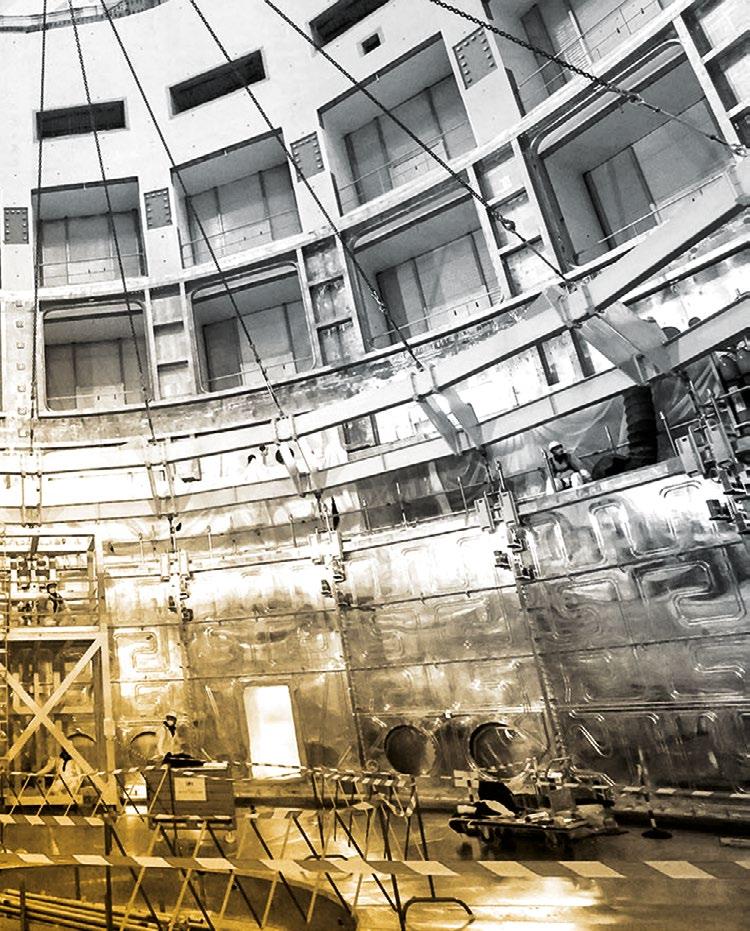
INDIA JAPAN KOREARUSSIA USA
CHINA
EUROPEAN UNION
31/12/ 2017 31/12/ 2018 31/12/ 2019 31/12/ 2020 31/12/ 2021
CHINA 77 79 87 89 88 EUROPEAN UNION 571 599 634 678 719
COMMITMENTS EXECUTION Amounts in thousands of Euro Total Commitments Appropriations 2021
Total Actual Commitments 2021
Unused Commitments Appropriations carried forward to 2022
Budget Headings a b c = a - b
TITLE I: DIRECT INVESTMENT (FUND) 470,141 225,275 244,867
TITLE II: R&D EXPENDITURE 1,666 (63) 1,729
TITLE III: DIRECT EXPENDITURE 389,450 264,275 125,174
TOTAL COMMITMENTS 861,257 489,487 371,770
PAYMENTS EXECUTION Amounts in thousands of Euro Total Payments Appropriations 2021
Total Actual Payments 2021
Unused Payments Appropriations carried forward to 2022
Budget Headings a b c = a - b
TITLE I: DIRECT INVESTMENT (FUND) 637,132 263,981 373,152
TITLE II: R&D EXPENDITURE 2,033 45 1,988
TITLE III: DIRECT EXPENDITURE 392,574 255,988 136,586
TOTAL PAYMENTS 1,031,739 520,013 511,726
Members 2021 Cumulative
EURATOM 298,737 1,875,274
PEOPLE’S REPUBLIC OF CHINA 38,767 338,202 REPUBLIC OF INDIA 49,725 214,721
JAPAN 39,514 333,471 REPUBLIC OF KOREA 47,668 340,996
RUSSIAN FEDERATION 44,530 353,227
UNITED STATES OF AMERICA 72,775 299,012 TOTAL CONTRIBUTIONS 591,717 3,754,902
Members
EURATOM 29,133 527,666 51,857 897,828
PEOPLE’S REPUBLIC OF CHINA 5,917 149,541 10,414 254,870
REPUBLIC OF INDIA 11,726 154,566 20,885 267,539
JAPAN 31,276 338,322 55,472 574,229
REPUBLIC OF KOREA 16,967 149,866 30,145 257,704
RUSSIAN FEDERATION 6,008 115,060 10,684 195,793
UNITED STATES OF AMERICA 473 89,288 851 151,534
TOTAL CONTRIBUTIONS 101,501 1,524,309 180,308 2,599,496

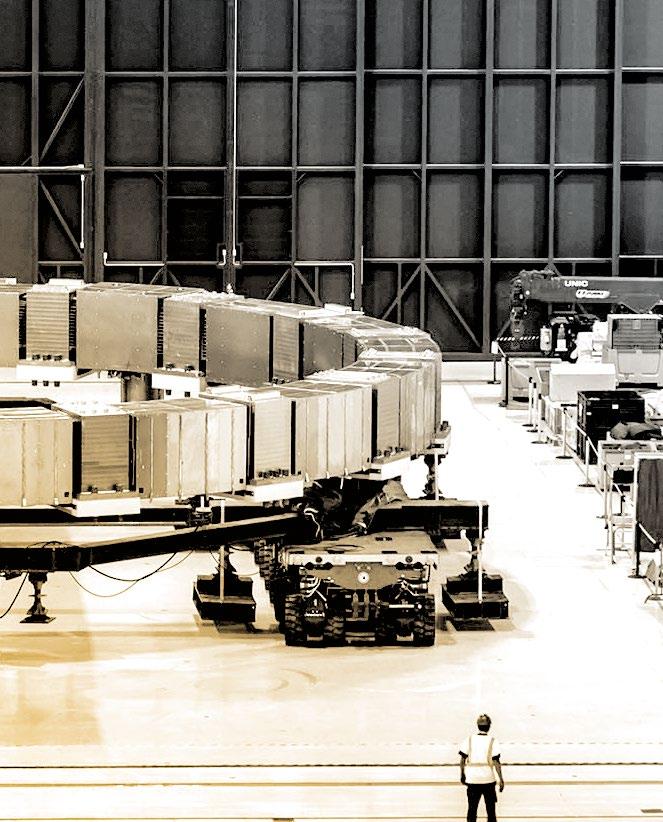
www.iterchina.cn

Fourteen PAs signed since 2007 representing : 100% in number and 100% of the total value of CN in-kind contributions.
Over 87 design or fabrication contracts related to ITER procurement have been signed with laboratories and industry.
TOROIDAL FIELD CONDUCTOR 7.5%
All conductor unit lengths delivered
POLOIDAL FIELD CONDUCTOR 65%
All conductor unit lengths delivered
MAGNET SUPPORTS 100%
Correction coils: clamps (2nd, 3rd and 4th batches) and thermal shields (3rd and 4th batches) delivered to IO
Gravity supports: 11-18 delivered to IO
Poloidal field: PFCS-2 clamps and pipes delivered to IO
FEEDERS 80%
Two in-cryostat feeder rings (SCC14 and SCC36) delivered to IO
Nine coil terminal boxes (CTBs) and 9 cryostat feedthroughs (CFTs) delivered to IO
Remaining feeder components in series fabrication
CORRECTION COILS 100%
Last 4 bottom correction coils delivered (BCC2, BCC3, BCC4, BCC6)
Two top correction coils delivered (TCC1 and TCC2)
Manufacturing ongoing for TCC3-6 and all side correction coils (SCC)
SCC case enclosure laser welding qualification completed
CORRECTION COIL AND FEEDER CONDUCTORS 100%
All correction coil and feeder conductors delivered
PULSED POWER ELECTRICAL NETWORK (PPEN) 100%
All components of PPEN sub-package delivered
AC/DC CONVERTERS 55%
All CN AC/DC Convertors for First Plasma delivered (IC milestone)
REACTIVE POWER COMPENSATION 100%
BLANKET FIRST WALL 12.6%
Qualification of larger beryllium tiles completed BLANKET SHIELD BLOCK 50.2%
Hot helium leak tests for 30 products completed
GAS INJECTION SYSTEM 100%
Last batch of manifold spool spares delivered FDR held successfully for gas valve box (GVB) and I&C
GLOW DISCHARGE CLEANING 100%
Manufacturing contract signed for temporary electrodes (TE)
Sandwich design test control center testing is ongoing
Preparing temporary electrode FDR and permanent electrode PDR
DIAGNOSTICS 3.2%
PDRs held for divertor Langmuir probe and remaining neutron flux monitors
FDR closure approved for EQ#12 port integration
MRR preparation ongoing for EQ#12 port integration
FDR closure ongoing for radial X-ray camera (RXC)
Chinese procurement highlights in 2021 % of ITER system procured by China
www.iter-india.org
Fourteen PAs signed since 2007 representing 100% in number and 100% of the total value of IN-DA in-kind contributions. 50 design or fabrication contracts related to ITER procurement have been signed with industry and R&D organizations.
CRYOSTAT 100%
Completion and acceptance of cryostat upper cylinder (IC milestone)
Installation activities for base section and lower cylinder completed in Tokamak pit
Major welding and non-destructive examination of top lid assembly completed at site workshop
All Contract-A1 deliverables completed (manufacturing and supply of cryostat components)
MRR completed for torus cryopump housing, manufacturing in progress
CRYOLINES & CRYODISTRIBUTION 100%
Lower pipe chase cryolines completed
All Group-Y cryolines and Group-W warmlines supplied to IO
Group-Y cryoline and Group-W warmline installation is complete in the cryoplant; cryoline installation activities continue in the Tokamak Complex
FDR concluded for auxiliary cold boxes (ACBs); manufacturing underway for various ACB systems and components after successful MRRs
Cartridges and electrical cabinets for cold circulators delivered to IO; casings delivered to the ACB manufacturer
DIAGNOSTIC NEUTRAL BEAM (DNB) POWER SUPPLY AND BEAM LINE 100%
Ion source manufacturing at an advanced stage; last segment of nine-segment extractor and accelerator system in manufacturing
Remaining ion source activities prior to FAT: Mo coating of some components, and modifications related to return of experience from SPIDER
Electrostatic residual ion dump (ERID): alternate technique found for connecting the water stub to the ERID panels
Assembly of the DNB neutralizer system underway
Call for tender launched for the DNB and the heating neutral beam #3 (HNB3) vacuum vessels
Order placed for development of solid-state-technology-based 200kW RF generators for DNB plasma source; efforts aligned with HNB and Neutral Beam Test Facility (NBTF) developments NBTF COMPONENTS (BEAM DUMP & 100 KV POWER SUPPLY) 2%
All NBTF components completed
ION CYCLOTRON RADIO FREQUENCY (RF) POWER SUPPLIES 100%
Development of 3dB hybrid combiner ongoing in-house; other transmission line components received and tested Tender published for driver and final stage amplifier (IO deliverables)
ION CYCLOTRON RADIO FREQUENCY (RF) POWER SOURCES 44%
As risk mitigation: integrated operations of high voltage power supply (HVPS) with RF source for 60MHz bandwidth test and combiner voltage stand-off test
As risk mitigation: upgrade of controller hardware for ion and electron cyclotron HVPS (including IC HVPS R&D unit)
ELECTRON CYCLOTRON HIGH VOLTAGE POWER SUPPLY 30%
Operation of 55kV, 110A main high voltage cathode power supply started to support Gyrotron Test Facility
ELECTRON CYCLOTRON RF GYROTRONS POWER SOURCES
(2 GYROTRONS OUT OF 24) 8%
FAT completed for the test gyrotron set; all deliverables received at ITER-India Gyrotron Test Facility
Site preparations near completion for auxiliary systems and services
HEAT REJECTION SYSTEM, COMPONENT COOLING WATER SYSTEM, CHILLED WATER SYSTEM 100%
Last part of component cooling water system (CCWS-2A) water polishing units delivered to IO after successful FAT Two water-cooled chillers ready for commissioning at IO Experimental pool scrubber tank delivered after successful FAT
IN-WALL SHIELDING (IWS) BLOCK ASSEMBLIES
All deliveries to EU-DA, KO-DA and IO completed SAT completed for all delivered components
100%
DIAGNOSTICS 3.1%
X-ray crystal spectroscopy (XRCS)/Edge: spectrometer design and component layout frozen. Procurement of high energy X-ray detector is in progress; other procurements are being initiated XRCS/Survey: procurement initiated for spectrometer sight tube material and prototype spectrometer components
Electron cyclotron emission (ECE): procurement underway for prototype activities
Upper port #09: In-vessel integration completed; in-vessel port design activities maturing; preparing for PDR and prototyping activities Charge eXchange Recombination Spectroscopy (CXRS) pedestal: order for fibre bundle assembly for CXRS pedestal prototype placed 2021 DOMESTIC AGENCY
Indian procurement highlights in 2021 % of ITER system procured by Indiahttps://www.fusion.qst.go.jp/ITER/english/iter.html
Thirteen PAs signed since 2007 representing 78% in number and 90% of the total value of JA-DA in-kind contributions.
More than 800 design or fabrication contracts related to ITER procurement have been signed with industry since 2007.
TOROIDAL FIELD CONDUCTOR 25%
All conductor unit lengths delivered
TOROIDAL FIELD MAGNET WINDINGS (9 OUT OF 19) 47%
Three toroidal field coils—#08, #10 (IC milestone), #02—delivered to IO
Another JA-DA coil is travelling; one is under integration; two are in the winding pack fabrication phase
TOROIDAL FIELD MAGNET STRUCTURES 100%
Eighth and ninth toroidal field coil structure (TFCS) sets delivered to EU-DA. Final set (ninth) travelling to EU-DA
One TFCS set under assembly with JA-DA winding pack; two others completed and waiting for assembly
CENTRAL SOLENOID CONDUCTOR 100%
All conductor unit lengths delivered
ITER & NEUTRAL BEAM TEST FACILITY (NBTF) HIGH VOLTAGE BUSHING AND ACCELERATOR 100%
Procurement of high voltage bushing completed
NEUTRAL BEAM POWER SUPPLY SYSTEM FOR ITER AND NBTF 33%
High-voltage tests continue
ELECTRON CYCLOTRON RADIO FREQUENCY
POWER SOURCES (8 GYROTRONS OUT OF 24) 59%
FAT completed for gyrotron #4 and #5
Gyrotrons #7 and #8 manufactured, finalizing JA-DA gyrotron fabrication
Seven anode/body power supply sets delivered to IO
One control cubicle set delivered to IO
ELECTRON CYCLOTRON EQUATORIAL LAUNCHER 33%
Internal shield prototype test completed
Prototype of steering mirror assembly and waveguide under preparation
Final design of equatorial launcher in progress
BLANKET REMOTE HANDLING SYSTEM 100%
Preparation activities underway for main component final design
OUTER TARGET 100%
Manufactured full-scale plasma-facing unit prototypes for high heat flux test
Contract awarded for manufacture of first six outer vertical targets (OVTs) in series production
Manufacturing contract awarded for 2nd full-scale OVT prototype
Contracts to manufacture materials for series production awarded
ATMOSPHERE
DETRITIATION
Joint JA-DA/IO procurement activities proceeding
Contract awarded for retroreflector of poloidal polarimeter
Preliminary design for divertor impurity monitor progressed
Contract awarded for final design of infrared thermography
Complementary Procurement Arrangement signed for Lower Port #2 Integration
www.iterkorea.org
Eight PAs signed since 2007 representing 89% in number and 95% of the total value of KO-DA in-kind contributions.
Over 200 design or fabrication contracts related to ITER procurement have been signed with universities, laboratories and industry since 2007.
Korean procurement highlights in 2021

MAIN VESSEL (2 OF 9 SEGMENTS) 21.52%
Second vacuum vessel sector, S#1(7), delivered to the ITER site
Procurement Arrangement scope completed (delivery of two sectors)
Activities progressing on two sectors under IO contract: Sector #8 (99.9% complete) and #7(1) (92.5% complete)
All neutral beam port stub extensions (#4, #5 and #6) manufactured
Two vacuum vessel gravity supports (#6 and #7) completed
100%
Activities progressing on remaining ports, vacuum vessel gravity supports, superbolts, and inserts
BLANKET SHIELD BLOCK 49.82%
Raw material fabrication: 135/220 blocks completed
Series production underway: 36 blocks completed and 36 blocks in manufacturing
AC/DC CONVERTERS 40.62%
FAT completed for AC/DC converter CS-6 and dummy load
Delivery of AC/DC converters ACDS, CS-5,6 and dummy load
Installation activities progressing on AC/DC converter switches (ACDS); CCU/L-5,6; CS-4,5,6; dummy load
TOROIDAL FIELD CONDUCTOR 20.18%
All conductor unit lengths delivered
VACUUM VESSEL THERMAL SHIELD AND CRYOSTAT THERMAL SHIELD 100%
All of the main components of the thermal shields delivered
ASSEMBLY TOOLING
MACHINE ASSEMBLY TOOLING 99.90%
All machine assembly tools delivered
TRITIUM STORAGE & DELIVERY 94.25%
PDR chit resolution ongoing
ITER storage and delivery system (SDS) experimental lab installed with depleted uranium handling license
DIAGNOSTICS
DIAGNOSTICS 2.01%
Final design of Upper Port #18 (UP18) integration
Manufacturing of transfer line completed for neutron activation system in VS12/13
% of ITER system procured by Korea
Manufacturing contract signed for neutron activation system and vacuum ultra violet spectrometer components in Equatorial Port #11 (EP11) port plug

Twelve PAs signed since 2007 representing 100% in number and 100% of the total value of RF-DA in-kind contributions.
800 design or fabrication contracts related to ITER procurement have been signed with industry since 2007.
Russian procurement highlights in 2021
SWITCHING NETWORK, FAST DISCHARGE UNITS, DC BUSBAR AND INSTRUMENTATION 100%
31 trucks of equipment delivered to IO; material procurement, manufacturing, and testing ongoing MIPs issued and approved for numerous prototypes and for series production
TOROIDAL FIELD CONDUCTOR 19.3%
All conductor unit lengths delivered POLOIDAL FIELD CONDUCTOR 20%
All conductor unit lengths delivered POLOIDAL FIELD MAGNET NO.1 100%
% of ITER system procured by Russia
Vacuum-pressure impregnation successfully carried out; clamps, closing plates, cryogenic strapping and diagnostic systems installed
FAT preparation ongoing
Tooling fabricated for installation on transportation frame
BLANKET FIRST WALL 40%
Elements of the first wall full-scale prototype manufactured and successfully tested
Hydraulic calculation of cooling systems carried out
Semifinished blank materials from 316 IG steel manufactured for further production BLANKET MODULE CONNECTORS 100%
396 electric strap pedestals delivered to IO
New flexible cartridge prototypes manufactured and successfully verified in static tests
Design of blanket module connectors and equipment for qualification tests developed
DOME 100%
Dome divertor full-scale prototype delivered to IO after successful hydro-vacuum tests and geometric control PLASMA-FACING COMPONENT TESTS 100%
Equipment for dome serial element testing delivered to test facility; test program developed and approved
Inner vertical target full-scale prototype: cycle tests on plasma-facing elements
UPPER PORTS 100%
Last three port stub extensions/port extensions delivered to IO; remaining central and lateral port extensions ongoing
PORT PLUG TEST FACILITY (PPTF) 100%
MRR passed for test tank, vacuum system and handling system (non-nuclear)
Components fabricated for non-nuclear stand #3; material procurement for #3 and #4
PORT PLUG INTEGRATION ENGINEERING
17%
3D models of upper port #02 and #08 (plug, interspace and port cell support structures) completed to final design level
3D models of equipment installation devices advancing for several ports
Neutronic analysis models (MCNP) refined for upper ports #02 and #08; structural analysis carried out for #11 diagnostics
H-alpha spectroscopy: FDRs held for in-plug First Plasma components and First Plasma I&C
H-alpha spectroscopy: prototype of the shutter drive for H-Alpha channel in EP11 fabricated
Neutral particle analyzers: LENPA analyzer accelerator mock-up manufactured, assembled and successfully tested; 3D models and structural analysis underway for a number of components
Divertor Thomson scattering: mockup calibration laser successfully passed life tests; simulation of beryllium deposition rate on first optical element developed
High-field side reflectometry: waveguide tube batch manufactured; set of captive support structures delivered to IO; laboratory stand in preparation
Divertor neutron flux monitor: 6-channel prototype of data acquisition system fabricated and tested
Vertical neutron camera: final 3D model developed (upper); thermal-cycling testing of diamond detectors carried out
(8 GYROTRONS OUT OF 24)
33%
Auxiliary systems for first four gyrotron sets delivered to IO; factory test of control system ongoing Set #5 and #6 manufactured; FAT on #5 achieved
www.usiter.org
Seventeen PAs signed since 2007 representing 100% in number and 100% of the total value of US-DA in-kind contributions.
The US has awarded more than 600 design or fabrication contracts to US industry, universities, and national laboratories in 46 states plus the District of Columbia since 2007.

US procurement highlights in 2021 % of ITER system procured by the US
TOKAMAK COOLING WATER SYSTEM 100%
All ESPN (French nuclear pressure qualified) and non-ESPN procurements have been placed for First Plasma components
CENTRAL SOLENOID (CS) MODULES, STRUCTURE AND ASSEMBLY TOOLING 100%
Central solenoid module #1 (IC milestone) and #2 delivered to ITER site
All US-provided assembly tooling deliveries completed
Structures: continue fabrication and deliveries
Pre-compression testing of structural prototypes performed at ITER site
TOROIDAL FIELD CONDUCTOR 8%
All conductor unit lengths delivered
PORT-BASED DIAGNOSTIC SYSTEMS 14%
Multiple system prototypes plus captive supports in design and fabrication
ION CYCLOTRON TRANSMISSION LINES 88%
ELECTRON CYCLOTRON TRANSMISSION LINES 88%
Final design review completed First article procurement underway
VACUUM AUXILIARY AND ROUGHING PUMP STATIONS 100%
Multiple final design reviews completed
Multiple components in fabrication
PELLET INJECTION SYSTEM 100%
Design and prototype development are advancing
DISRUPTION MITIGATION SYSTEM UP TO A CAPPED VALUE
R&D on ITER-scale test stand has yielded key understandings for system design
TOKAMAK EXHAUST PROCESSING SYSTEM 88%
Multiple prototype contracts placed
POWER SYSTEMS
STEADY STATE ELECTRICAL NETWORK 75%
All components delivered
https://fusionforenergy.europa.eu/
Forty-one PAs signed since 2007 representing 85% in number and 96.5% of the total value of EU in-kind contributions.

The EU-DA has awarded 725 design or fabrication contracts related to ITER procurement to universities, laboratories and industry since 2007.
BUILDING CONSTRUCTION, TOKAMAK PIT EXCAVATION AND DRAINAGE, GROUND SUPPORT STRUCTURE, SEISMIC ISOLATION PADS 100%
Anti-seismic bearings completed
Excavation and ground support completed
Cleaning Facility completed; Site Services Building completed
Tokamak Building: access for IO contractors granted for all levels
Tritium Building: access for IO contractors granted for the basement levels
Diagnostics Building: building services design activities completed
Start of construction: Neutral Beam Power Supply Building; Control Building; Fast Discharge and Switching Network Resistor Building
ARCHITECT ENGINEER SERVICES 100%
ITER HEADQUARTERS 53.5%
Headquarters building completed
TOROIDAL FIELD CONDUCTOR 20%
All conductor unit lengths completed
TOROIDAL FIELD MAGNET WINDINGS (10 OUT OF 19) 53%
3 coils delivered to IO, 3 others in various stages of production
PRE-COMPRESSION RINGS 100%
All pre-compression rings completed
POLOIDAL FIELD CONDUCTOR 18%
All conductor unit lengths completed
POLOIDAL FIELD MAGNETS NO. 2-6 100%
PF5 completed and delivered
PF6 and PF5 installed in assembly pit
PF2 completed and delivered
PF4: winding pack impregnation underway; PF3: double pancake winding ongoing
POWER SUPPLY HEATING NEUTRAL BEAM (HNB) 35%
FDRs held for residual ion dump power supply and acceleration grid power supply (AGPS) conversion system; manufacturing to start in 2022
Ion source and extraction power supply (ISEPS): final documentation for MITICA unit approved (equipment transferred under 2021 PA)
ISEPS: change to solid state technology for radiofrequency generators (HNB units) formalized with supplier
NEUTRAL BEAM TEST FACILITY (NBTF) COMPONENTS 67%
MITICA beam line components: MRR approval for main sub-assemblies (neutralizer panels, electrostatic residual ion dump (ERID), calorimeter)
First production element manufactured for electrostatic residual ion dump (ERID) and calorimeter panels
All MITICA beam source prototypes successfully tested; component production reached 75%
Extremely tight mechanical tolerances achieved during assembly and alignment of the first-stage accelerator
SAT completed for NBTF gas and vacuum handling system
NEUTRAL BEAM ASSEMBLY TESTING 100%
PA signed in June for Neutral Beam Assembly and Testing (Stage 1, HNB assembly tooling)
NEUTRAL BEAM SOURCE AND HIGH VOLTAGE BUSHING 41%
NEUTRAL BEAM BEAM LINE COMPONENTS 100%
NEUTRAL BEAM PRESSURE VESSEL AND FRONT END COMPONENTS 100%
PA signed in July for Neutral Beam Confinement and Shield Components (stage 1, HNB vessels)
Drift duct FDR held
MAGNETIC SHIELDING, ACTIVE COMPENSATION & CORRECTION COILS 100%
FDR held for the active compensation and correction coils and the passive magnetic shield
ION CYCLOTRON ANTENNA 60%
Scope transferred to IO
ELECTRON CYCLOTRON CONTROL SYSTEM 40%
ELECTRON CYCLOTRON HIGH VOLTAGE POWER SUPPLY 62%
All preparation works, including construction readiness review, completed; start of site installation in 2022
All medium voltage switchgears + two additional units delivered to IO for electron and ion cyclotron heating systems
Manufacturing of remaining four units in progress, two successfully factory tested
ELECTRON CYCLOTRON UPPER LAUNCHERS 76%
PA amendment signed
ELECTRON CYCLOTRON RADIO FREQUENCY POWER SOURCES
(6 GYROTRONS OUT OF 24) 25%
Final contract tender offers received; procurement contracts to be signed in 2022
MAIN VESSEL (5 OF 9 SEGMENTS) 56%
Sector #5: in final assembly stage, stub extension welded
Sector #4: start of final D-shape assembly
Outer shell welding started for Sectors #9, #3 and #2
INNER VERTICAL TARGETS 100%
Successful manufacturing and high heat flux testing of full-scale prototypes CASSETTE BODY 100%
Contract for Stage II cassette body series production signed DIVERTOR RAIL 100%
BLANKET FIRST WALL 47.4%
Framework contracts signed for copper-chromium-zirconium alloy material procurement
Successful manufacturing and heat flux testing of full-scale prototypes BLANKET COOLING MANIFOLDS 100%
Call for tenders launched for blanket cooling manifold series production
IN-VESSEL DIVERTOR REMOTE HANDLING SYSTEM 100%
Final design of cassette toroidal mover and multifunctional mover advancing, with R&D in support CASK AND PLUG REMOTE HANDLING SYSTEM 100%
Second PDR held, final design of first assembly casks launched NEUTRAL BEAM REMOTE HANDLING SYSTEM 100%
Crane prototype tested and validated, started preparation of crane final design IN-VESSEL VIEWING SYSTEM (IVVS) 100%
Advances in IVVS prototyping and assembly, final design tasks specified COMMON TECHNOLOGIES 100%
Advances in GENOROBOT integration into Divertor Test Platform 2 (DTP2)
Procurement of generation 2 rad-hard electronics for camera and multiplexer launched
STEADY STATE ELECTRICAL NETWORK (SSEN) AND PULSED POWER ELECTRICAL NETWORK (PPEN): DETAILED SYSTEM ENGINEERING DESIGN 100% INSTALLATION AND COMMISSIONING 100% EMERGENCY POWER SUPPLY 100% SSEN COMPONENTS 25%
FRONT END CRYO-DISTRIBUTION: WARM REGENERATION LINES 100%
Warm generation line package completed FRONT END CRYO-DISTRIBUTION: FRONT END CRYOPUMP DISTRIBUTION 100%
All Johnston couplings delivered; warm regeneration box delivered CRYOPUMPS, TORUS (6) AND CRYOSTAT (2) 100%
Hydroformed components: manufacturing completed CRYOPUMPS, NEUTRAL BEAM 100%
First production pumping section qualified LEAK DETECTION 100%
PDR hold point released for leak detection and leak localization
WATER DETRITIATION SYSTEM 100%
Water holding tanks and emergency tanks complete HYDROGEN ISOTOPE SEPARATION SYSTEM 100%
CRYOPLANT: LN2 PLANT AND AUXILIARY SYSTEMS 50%
Mechanical and electrical installation completed
Commissioning of gaseous helium tanks completed
DIAGNOSTICS 25%
First batch of inner vessel coils delivered to IO site
Two MRRs held: magnetics plant controller software and magnetics bespoke electronics
11 FDRs held: port engineering of 4 upper ports and 2 equatorial ports; collective Thomson scattering; bolometer cable-installation templates; radial neutron camera in-port; visible/infrared wideangle viewing system; EQ#12 ex-vessel and magnetics data analysis software
PDR held for visible/infrared wide-angle viewing system I&C
All PAs with EU-DA for diagnostics now signed
WASTE TREATMENT AND STORAGE 100% RADIOLOGICAL PROTECTION 100%
*Does not include Complementary Diagnostic Arrangements
On the ITER platform, 83% of the infrastructure required for First Plasma is in place.
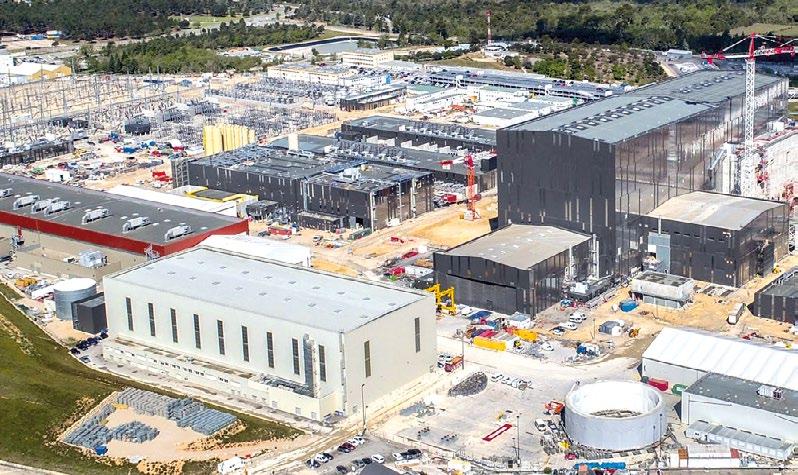
The following entities have signed Cooperation Agreements with the ITER Organization. (The list excludes agreements signed within the framework of the ITER Project Associates, Scientist Fellows, and ITER Operation Network programs).
International Atomic Energy Agency Austria CERN (European Organization for Nuclear Research) Switzerland
Belgian Nuclear Research Centre (SCK-CEN) Belgium
Institute of Plasma Physics Chinese Academy of Sciences (ASIPP) China University of Beihang (BUAA) China
Southwestern Institute of Physics (SWIP) China
Wuhan Institute of Technology China
State Nuclear Power Engineering Company (SNPEC) China
Institute of Plasma Physics of the Academy of Science of the Czech Republic (IPP-Prague) Czech Republic
Commissariat à l’Energie Atomique et aux Energies Alternatives (CEA) France Protisvalor Méditerranée France
Karlsruhe Institute of Technology (KIT) Germany
Max-Planck-Institut für Plasmaphysik (IPP) Germany
Forschungszentrum Jülich Gmbh Germany
Wigner Research Centre for Physics Hungary
Società Gestione Impianti Nucleari (SOGIN-S.p.A) Italy
National Institute for Fusion Science (NIFS) Japan
Korea Institute of Fusion Energy (KFE) (former National Fusion Research Institute) Korea
Nuclear Physics, Polish Academy of Sciences (IFJ Pan) Poland
Instituto Superior Técnico (IST) Portugal
The Ioffe Institute Russian Federation
The Budker Institute of Nuclear Physics, Siberian Branch, Russian Academy of Sciences (BINP SB RAS) Russian Federation Barcelona Supercomputing Center Spain
Centro de Investigaciones Energeticas Medioambientales y Technologías (CIEMAT) Spain
Catalonia Institute for Energy Research Spain
United Kingdom Atomic Energy Authority (UKAEA-CCFE) United Kingdom
University of Leuven Belgium
The Southwest Jiao Tong University China
Huazhong University of Science and Technology China
Dalian University of Technology (DLUT) China
Anhui University of Science and Technology China Shanghai Jiao Tong University (SJTU) China Åland University of Applied Sciences Finland
TOULOUSE INP - ENSEEIHT "N7" France
Université Aix-Marseille France
Université Sorbonne Paris Nord France
Centre for Energy Research Hungary University of Nirma India
University of Pisa Italy
University of Rome-Sapienza Italy
University of Milano-Bicocca Italy
University of Bologna—Department of Electronic and Information Engineering (DEI) Italy
University of Rome Tor Vergata (URTV) Italy
Universita degli studi di Brescia Italy
University of Genoa - Department of Electrical, Electronic, Telecommunications Engineering and Naval Architecture (DITEN) Italy
The Italian National Agency for New Technologies, Energy and Sustainable Economic Development (ENEA) Italy
Kyushu University Japan Kyoto University Japan
Seoul National University Korea
Eindhoven University of Technology Netherlands University of Ljubljana Slovenia Universidad de Sevilla Spain
Universidad Politécnica de Madrid Spain
University of Basel Switzerland
University of Peter the Great St. Petersburg Polytechnic Russian Federation National Research TOMSK Polytechnic University (TPU) Russian Federation
The National Research Nuclear University (Moscow Engineering Physics Institute- MEPhl) Russian Federation University of Strathclyde
United Kingdom
United States of America University of Wisconsin-Madison
University of Columbia
United States of America University of Texas- Austin
United States of America
United States of America University of Illinois
Lehigh University
United States of America
United States of America University of California, Los Angeles (UCLA)
The Royal Institute of Technology (KTH) Sweden
Broader Approach Activities (EU/Fusion for Energy + JA/QST National Institutes for Quantum and Radiological Science and Technology) Europe/Japan Google Ireland Ltd Ireland
Consortium RFX (Italian National Research Centre, ENEA, Università di Padova, Acciaierie Venete S.p.A., Italian National Institute for Nuclear Physics) Italy

Nippon Telegraph and Telephone (NTT) Japan
Tunnel Euralpin Lyon Turin France-Italy Microsoft Corporation
United States of America Rosatom Western Europe SARL Russian Federation
Renaissance Fusion SAS France
